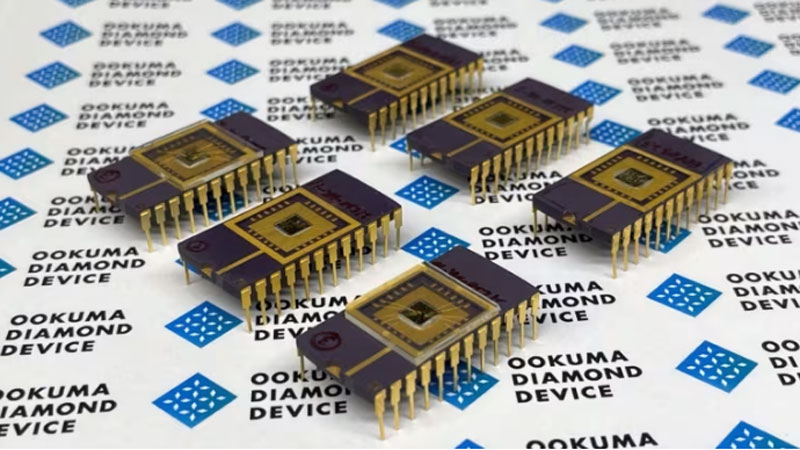A number of Japanese companies and researchers are approaching the commercialization of diamond power electronics. This will happen next year and will become widely in demand by the end of the current decade. Compared to silicon, diamond components can withstand 50,000 times higher currents. This is necessary for electric vehicles, power plants and, in general, for compact, reliable and powerful power supplies and power circuits.

Diamond chips for robots clearing the radioactive ruins of Fukushima. Image Source: Ookuma Diamond Device
But it’s not that simple. Known for its hardness, diamond cannot be polished by conventional means when it comes to wafers for growing chips and transistors, which is a standard and necessary procedure for lithographic component production. Actually, growing a large enough plate from diamond is also not easy. Only recently the Japanese company Orbray was able to exceed the wafer size of 1 inch (2.54 cm) and began producing 2-inch wafers (5 cm), promising to soon develop technology for producing 4-inch diamond substrates (10 cm).
The Japanese company JTEC promises to help with polishing diamond substrates. It has a unique technology for polishing the surfaces of high-hardness materials using plasma. Previously, JTEC demonstrated the ability to polish single-crystalline diamond substrates with plasma without causing damage and received orders to develop the corresponding equipment.
EDP, the only company in Japan that produces and sells seeds from which synthetic diamonds are made for jewelry, can help with growing single-crystal diamond substrates. The world’s largest synthetic single crystals are also produced in this country, although China and India are leaders in this area. By the way, there are no uniform regulatory requirements for synthetic diamonds, which will in some way complicate the development of “diamond” electronics. But here the word and deed is up to JEDEC or another standardization body.
According to the source, the world’s first power circuit using diamond semiconductors was developed in 2023 by a team at Japan’s Saga University. In December 2024, Tokyo-based startup Power Diamond Systems unveiled a diamond component capable of withstanding the highest current of 6.8 A. The company plans to begin shipping samples within a few years. On the practical side, Ookuma Diamond Device is building a plant in Fukushima Prefecture to produce radiation-resistant power elements for robots intended to clean up the ruins of the infamous Fukushima Nuclear Power Plant.
Resistance to radiation and the ability to withstand temperatures that are prohibitive for conventional chips are a guarantee for work in space and aviation, where diamonds are also heading, like all future diamond electronics.